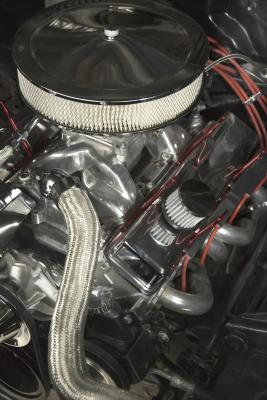
Some disadvantages associated with aluminum engine blocks would be readily apparent to anyone who had the misfortune to own certain domestic attempts to use such burgeoning technology. All-aluminum V-8 engines offered by Buick, Pontiac and Oldsmobile in the early 1960's were prone to overheat, and often required extensive repairs afterward. Chevrolet tried their hand at it almost ten years later, with the four-cylinder Vega. These engines suffered catastrophic failures often with little, or no, warning. Unenlightened, but optimistic, General Motors made yet another dismal attempt with a Cadillac engine, touted as the HT4100, which succumbed in the same manner as the previous misguided endeavors. The lessons learned came at a considerable cost to all concerned, but may have aided refinements to the craft that serve better in modern applications.
The engine coolant that travels through the block, radiator, and heater core can become contaminated over time. Acidity level increases and electrolysis can result, ruining the anti-corrosive abilities of the antifreeze. This process can be accelerated by the presence of dissimilar metals and materials, or the use of tap water for coolant mix dilution. The corrosion that occurs has a detrimental effect on aluminum engine blocks, as well as other components. Chemical and electrical reactions between the various materials can even cause less hardy components, like heater cores, to spring leaks in a relatively short time. The use of a pill-shaped additive is recommended by some car manufacturers to stem such reactions. However, aluminum engine blocks lack the durability of cast iron, and may be more easily ruined through some maintenance misstep.
Aluminum engine blocks are often modified to safeguard against wear and overheating of the cylinder walls. The piston rings are in constant contact with the cylinder walls, and travel a length in the bore, repeatedly. Metal sleeves are pressed into the cylinders of some aluminum blocks to provide a more compatible surface for the piston rings. The sleeves can dislodge from manufacturing defects, or engine overheating. Once the sleeve loses its bond with the block, piston motions and other forces, can propel the sleeve upward, harming the cylinder head. More modern, and more successful measures employ ceramic coatings in the cylinder walls, but the associated costs drive up the price of manufacturing a vehicle.
Just as the costs of research and development of ceramic coatings adds to the price of a vehicle, so too does any heightened exertions when machining car parts. Milling and machining practices for aluminum engine blocks require a level of precision uncalled for by cast iron components. Computer-aided, and laser-guided techniques ensure proper fit and function, but require a major investment in factory tooling. Heat treatments, or annealing, may also be needed when aluminum is the raw material. The weight reduction afforded by using aluminum engine blocks is meant to reduce operating costs for a vehicle, but might not yield savings, in consideration of initial outlay, frequency of use, and the price of fuel.
The forces inherent in automotive engines may have a stronger effect on aluminum engine blocks. These axial and radial forces increase with engine size, and may serve as the reason for the continued use of cast iron for the engine blocks of heavier vehicles, like pick-up trucks. Strains and stresses resulting from towing or carrying loads might accentuate any weaknesses of an aluminum engine more readily than a cast iron counterpart. Where the more malleable cast iron responds to simple repairs, an aluminum engine could require complete replacement, to remedy some identical mishap. While most automotive manufacturers seem to have learned valuable lessons in the techniques of aluminum engine blocks, some domestic makers may be haunted by the skeletons in their closet. Some research could be necessary before selecting a particular vehicle.